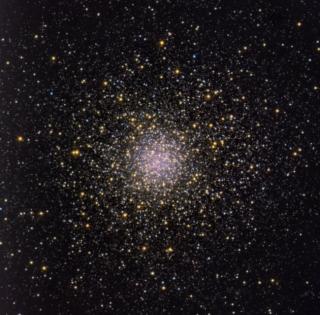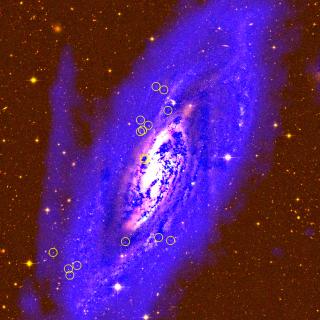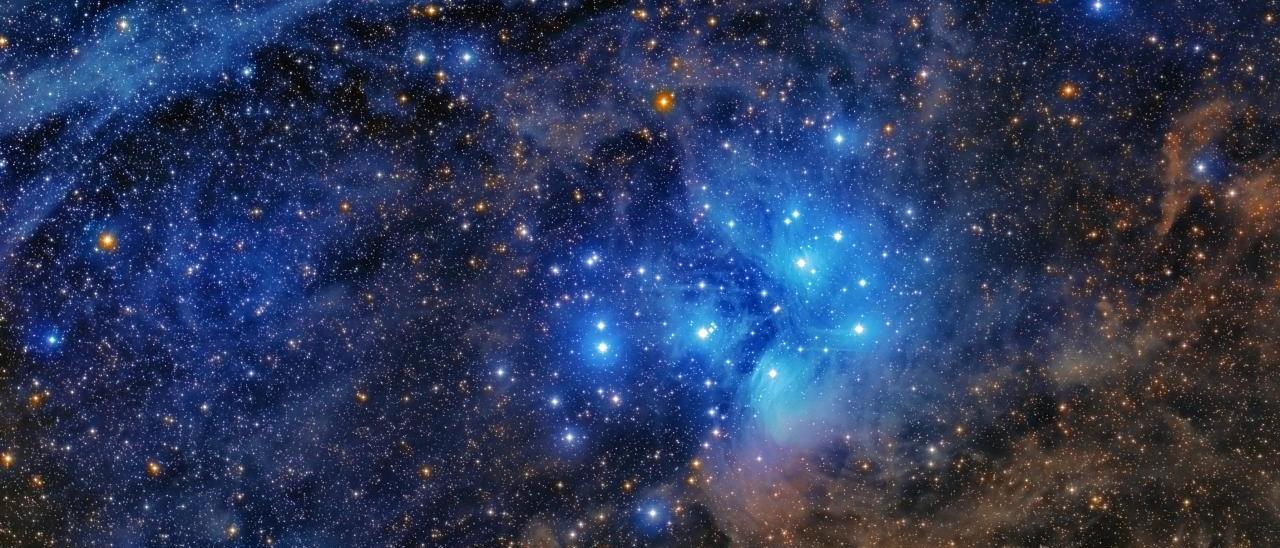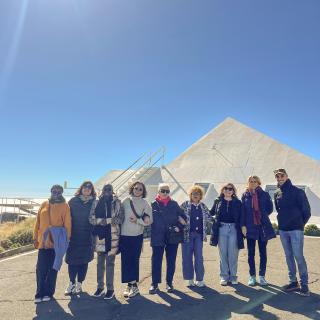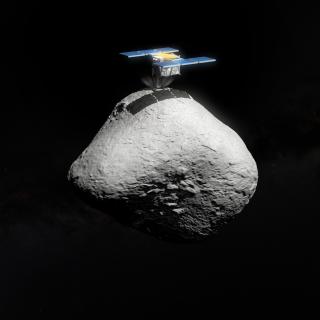After comparative studies of a sample of almost 50 open stellar clusters of different ages in the Milky Way, research led by the Instituto de Astrofísica de Canarias (IAC) and the University of La Laguna (ULL) with collaboration by the Polytechnic University of Cartagena, shows that when these star clusters age they lose the majority of their less massive members. This result confirms that there are internal dynamical processes in open clusters caused by their long journeys through the Galaxy, which bring about the expulsion of these low mass stars. The study, published in the journal Astronomy & Astrophysics, used data from the European Space Agency (ESA)‘s Gaia satellite. The research is complemented by an interactive website for professionals, amateurs, and students.
An open cluster is a group of stars which formed from a single molecular cloud. The best known examples of the Pleiades and the Hyades, which can be seen with the naked eye in the winter sky. Open clusters comprise from several hundred to several thousand stars, which are bound together by their gravity, although less tightly bound than are the globular clusters. As all the stars in a cluster have the same origin, age, and chemical composition their properties are easier to determine than those of single isolated stars, which makes cluster very useful for the study of star formation and evolution..
The stars in open clusters also share a common motion in space, derived from the movement of the molecular cloud from which they formed. Studying this motion allows research teams to distinguish the stars in a given cluster from stars lying along the same line of sight but which are not members of it, and to know with security that they were born at the same time, that they are at a common distance from the Earth, and that they are related with each other as a group.
A team of scientists led byIAC researcher Maruska Zerjal has used the latest measurements by ESA’s Gaia satellite to study the motions of the stars which are members of 50 open clusters within a moderate distance from the Sun. When choosing the sample the team set a distance limit of 1500 light years and and age limit of 1000 million years, which is 4.6 times less than the age of the Sun. Within these limits they could detect stars with low mass, less than one half the mass of the Sun, which are much harder to detect than more massive, brighter stars.
“We set an upper limit on the distance because the low mass stars are too faint to be observed as single objects when they are far away from us, and on the age because we know that for really old clusters these kinds of stars are almost undetectable. We have concentrated on conditions when they can be detected, and in this way we obtained exact information about the different types of stars which make up each cluster” explains the researcher.
Once the clusters had been identified the team classified them in three groups, and analyzed the brightness distribution of the stars in them.”We have analyzed three groups of open clusters in our Galaxy” explains Nicolas Lodieu, an IAC researcher who is a co-author of the study. “Using the simile of the different stages of life of a human being, some clusters are in the child stage, others are adolescents, and the third are adults”
After analyzing each group the research team showed that in the oldest clusters studied, between 100 million and 800 millions of years old, there is a steady loss of the least massive stars. The youngest clusters, on the other hand, all show a similar stellar distribution, with the same proportions of the different tupes of stars, form the most massive and brilliant to the less massive and fainter.
“We found that the brightness distributions of the young clusters, with ages around 50 million years, are all very similar. But the luminosity distributions of older clusters such as the Pleides and the Hyades are more different” explains Zerjal.
According to the team, this finding implies two important conclusions. Firstly the mass distribution of the stars in young clusters seems to be a universal phenomenon. Secondly in open clusters there are internal dynamic processes due to their long journeys through the Galaxy, which cause them to lose low mass stars.
“As open clusters get older they undergo interactions as they travel through the Galaxy, either between the stars in the cluster, or with molecular clouds or with other clusters. As the stars are not sufficiently bound together by their mutual gravity, these encounters tend to scatter the cluster’s least massive stars” explains Lodieu in detail.
In the next few years the team plans to study new candidates. “Although it seems that the initial distribution of stars is a uniform phenomenon we will need to investigate further to provide more solid evidence of the existence of these dynamic effects” adds Zerjal.
The catalogue of the clusters analyzed is available in the public astronomical archive Centre de Données astronomiques de Strasbourg (CDS). In addition, to make the results even more accessible to a wider public the team has developed an interactive website with all the clusters and their member stars. “The aim of this site is to facilitate new discoveries among both professionals and amateurs, but also to encourage students to explore, discover and learn, inspiring a new generation of astronomers” concludes Lodieu, who is the Principal Investigator (PI) of this project, which has been funded by the Government of the Canaries.
Article: M. Žerjal et al. “Young nearby open clusters and their luminosity” functions. A&A Volume 678, October 2023. DOI: https://doi.org/10.1051/0004-6361/202345920
GAIA Open Clusters website: http://research.iac.es/proyecto/gaiaclusters/about.php
Contacts:
Maruska Zerjal, investigadora del IAC: maruska.zerjal [at] iac.es (maruska[dot]zerjal[at]iac[dot]es)
Nicolas Lodieu, investigador del IAC: nlodieu [at] iac.es (nlodieu[at]iac[dot]es)
Antonio Pérez Garrido, investigador de la UPCT: Antonio.Perez [at] upct.es (Antonio[dot]Perez[at]upct[dot]es)
